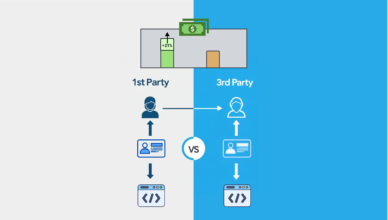The increased scrutiny on third-party cookies, mobile device IDs, and IP addresses has made it increasingly difficult for advertisers to continue delivering meaningful experiences to consumers. As a result, publishers and advertisers are finding ways to personalise the consumer journey without the need for unauthenticated device and browser IDs.
In the past, the advertising and marketing industries have not provided enough transparency nor explained how data provides value to consumers. For example, it was not made abundantly clear to consumers that content on news sites and elsewhere is kept accessible in exchange for targeted advertising based on the data people share with publishers. The truth is that ads enable the free flow of information and entertainment across the internet. Subsequently, trust has suffered.
The industry now has a chance to regain this trust and build an ecosystem that puts privacy first and provides consumers with more transparency and control while promising more robust revenue models for publishers and better ROAS for advertisers.
Providing authentic value
The best way to put this new ecosystem into practice is by offering a transparent and fair value exchange. When consumers authenticate, they share their identity in an acceptable way to gain access to meaningful content. In return, they know that their identity is going to be used to create personalised ads. Users share their identities with trusted publishers to get access to content at no charge. By taking this approach, users are guaranteed transparency, control, and choice. At the same time, publishers are putting back in the driving seat and more closely manage their relationships with users and advertisers.
Marketers want to buy inventory that is people-based and addressable – and publishers need to make doing this as straightforward as possible, so they can command higher CPMs and deliver better performance.
Benefits for all
Publishers can identify their authenticated users in real-time to enable data-informed targeting. As a result, they can unlock the actual value of their inventory, open new revenue streams to make up for the loss of third-party cookies and other identifiers, and better compete with the walled gardens.
Solutions based on authentications enable addressability through the ecosystem, allowing marketers to minimise and/or eliminate their dependency on third-party cookies. Additionally, advertisers can connect their audiences to authenticated inventory the way they do today – through the DSPs they currently transact with or via private marketplace deals with SSPs, so there’s no need to overhaul existing processes.
Beyond the benefits to users, publishers, and advertisers, there are also ways that tech platforms can reap the rewards of authentication solutions. For example, authenticated data is more stable than third party cookie data, has higher security standards and enables better privacy audit trails.
Building for a better future
Authentication solutions are favourable for the whole ecosystem. They build consumer trust, putting the consumer and the publisher in control, and create an environment where advertisers and publishers can more easily work together to deliver meaningful outcomes for brands. In particular, advertisers have enormous potential to connect all of their first-party data to a people-based identity and leverage it to personalise their consumer journey across the internet.
It’s time to rebuild the modern-day ecosystem to transact on people-based identity and move away from the third-party cookie. Instead, it’s time to build an ecosystem rooted in consumer trust and puts the consumer first. And, in a trusted ecosystem, this trust is expressed through a privacy-focused, transparent authentication experience.









